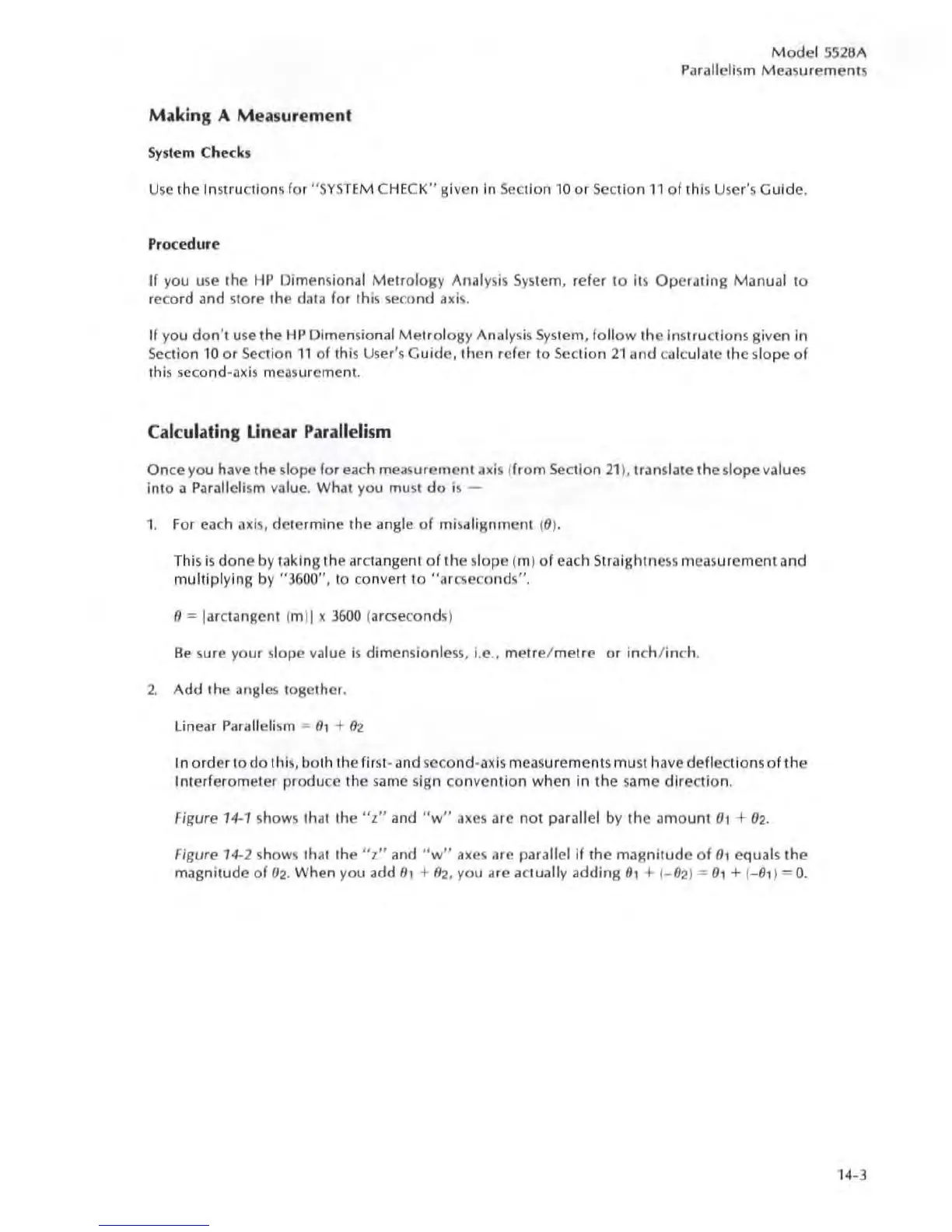Making A Meas
ur
ement
Sys
tem Ch
ec
lf:
s
Mode
l
552
6A
Parallelism
Mea
s
urements
Use the Ins
tru
ctions for
"SYS
TEM
CHECK" given In Sec
tion
10
or
Section
11
of
thi
s User's
Guide
.
Pr
ocedure
If
you use the riP Dimensional
Metrolog
y Analysis
Sys
tem,
refer
to
its
Operating
Manual
to
record and store th e data for this
seco
nd
axi
s.
If you
don't
use
the
HP
Dimensional
Me
t
rol
ogy Anal
ys
is
Sys
tem, fol
low
the instruc
tion
s given in
Section
10 or Section
11
of this User's
Guide,
then refer
to
Section
21
and calc
ulatc
the s
lope
of
this second-
axi
s measurement.
Calculating
lin
ear Paralle
li
sm
On
ce you
ha
ve
the slope for each
mea
su
rement
ax
is (
from
Section
21
), translate the slope values
into a
Para
ll
elism value. What
yo
u must do is -
1. F
or
ea
ch
axis,
determine the angle
of
misalignment (6).
This
is
done
by taking the
ar
ctangent
of
the s
lope
(m)
of
each Straightn
ess
mcas
uremenl
and
multiplying
by "
3600
",
to convert to " arcseconds
".
/1
::=
(arctangent (m)1 x
3600
(
arcse
co
nd
s)
Be
s
ure
yo
ur
slope value is dimensio
nle
ss,
i.e.,
metre
/
me
tre
or
in
ch/
in
ch.
2.
Add
the angl
es
together.
linear
Parallelism = 8, +
82
In
order
to
do
thi
s,
both the first- and second-axis measurements
mu
st have
def
lections
of
the
Interferometer
produ
ce the same sign co
nvention
when in the
sa
me
di
rec
tion
.
Figure
14
·1 shows that the
"z"
and
"w"
axes
arc
not
parallel by
the
amount
0, + 0
2.
Figure 14-1 s
how
s that the
"z"
and
"w"
axes
are parallel
if
the
magnitude
of
0, equals
the
magnilUde of
02.
When
yo
u add 6, + 8
2,
you are actually adding 8, +
(-
02
) =
01
+
(-
0, ) = 0.

